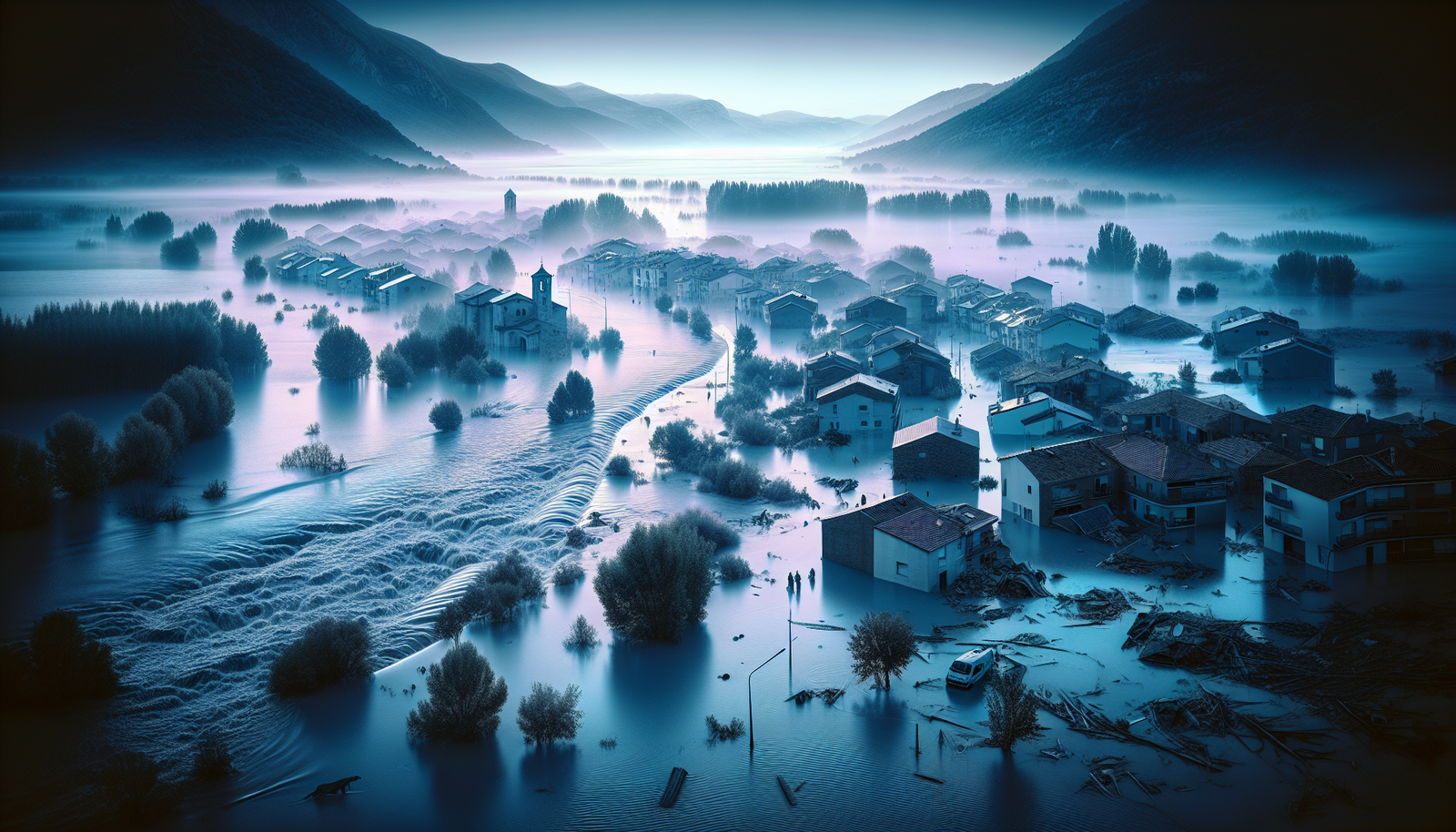The floods in Spain reveal a reality often unknown behind striking images, sometimes likened to creations of artificial intelligence. The catastrophe that occurred in Valencia, where torrential rains delivered in one day the equivalent of a year’s worth of rain, highlights crucial ecological and societal issues. The images circulated on social media raise questions about the perception of the catastrophic nature of a phenomenon whose severity is often underestimated. The consequences are alarming, affecting not only infrastructure but also the lives of residents, while leading to persistent misinformation.
The devastating floods in Spain
Chronic flooding frequently strikes Spain, but it is often underestimated. Recently, the Valencia region was hit by an unprecedented disaster, where torrential rains caused massive destruction. Some areas received the equivalent of a year’s worth of rain in just 24 hours, exacerbating the risks of flooding.
Impact of heavy rainfall
The phenomenon of “rain bombs” manifested in Valencia, generating astonishing amounts of water, sometimes exceeding 490 liters per square meter in less than eight hours. These extreme weather events worsen the vulnerability of urban infrastructure. The narrow streets of the city, often designed without adequate considerations for water drainage, turn into formidable torrents capable of uprooting parked vehicles.
misinformation and disturbing images
An iconic photograph of this event is widely circulated on social media, showing a chaos of piled-up cars. Its stunning clarity has raised doubts about its authenticity, with some suspecting it to be generated by artificial intelligence tools. This phenomenon raises questions regarding the increasing prevalence of images created by AI, fueling confusion around real events.
The role of social media in this misinformation is significant. Many users, confronted with striking images, question their veracity, thereby facilitating the spread of conspiracy theories. The perception of this phenomenon may be altered by the proliferation of manipulated images, making the public more skeptical.
Technology and flood forecasting
Advancements in artificial intelligence raise questions about their application to natural disaster forecasting. With sophisticated algorithms, AI could significantly enhance the detection of major flooding risks. The modeling of meteorological data and environmental conditions presents unprecedented potential to anticipate these events and minimize their impacts.
The site Actu.ai highlights that artificial intelligence could revolutionize weather forecasting as well as crisis management. It will allow the analysis of complex climate trends, thereby making it possible to issue early alerts to protect populations.
Diverse initiatives are already underway to integrate innovative technologies into flood management. The collaboration between scientific experts and local authorities promotes the implementation of warning systems aimed at reducing human and material losses.
Testimonies and human consequences
The recent floods in Valencia have tragically caused the death of more than 200 people. Authorities are mobilizing significant resources to conduct rescue and cleanup operations. Residents of the region, profoundly affected by this disaster, now face the psychological and economic consequences of this catastrophe.
Survivor testimonies reveal a harrowing reality. Between despair and solidarity, communities are reorganizing and helping each other to overcome this crisis. However, a sense of anxiety remains about the future and the risks of such disasters, exacerbated by climate change.
Reflection on risk management
The floods in Spain illustrate an urgent need to improve risk management and establish adequate preventive measures. Strengthening drainage infrastructure and raising public awareness must be among the priorities. Political decisions should be based on solid scientific data to anticipate the challenges ahead in the context of climate change.
The poignant images of the ongoing devastation remind us that the reality of floods should not be trivialized or underestimated. Vigilance and collective commitment are essential to address this growing issue. Authorities must recognize the importance of clear communication to avoid misinformation and reinforce public trust in the face of such events.
Frequently Asked Questions about floods in Spain
What are the main causes of flooding in Spain?
Flooding in Spain is primarily caused by extreme weather phenomena, such as torrential rains, which can bring the equivalent of a year’s worth of precipitation in a single day. Other factors include rapid urbanization, deforestation, and climate change.
How are Spanish authorities responding to flooding?
Authorities are implementing early warning systems, strengthening drainage infrastructure, and conducting evacuations when critical water levels are reached. Additionally, awareness campaigns are being conducted to educate the public on precautions to take.
Can flooding be predicted with artificial intelligence?
Yes, the use of artificial intelligence in climate modeling and meteorological data analysis can improve flood forecasting. This allows for anticipating certain extreme events and better preparing emergency responses.
Why do some images of flooding raise doubts about their authenticity?
Some images of flooding, due to their intensity and extraordinary visual effects, may appear too surreal and lead people to think they have been faked or generated by AI tools. This can be exacerbated by the proliferation of AI-generated content on social media.
What are the ecological consequences of flooding in Spain?
Flooding causes habitat destruction, contamination of water sources, and soil erosion. Local ecosystems, particularly in coastal and river areas, can be severely impacted, leading to a loss of biodiversity.
What is the economic impact of flooding on affected regions in Spain?
Flooding results in enormous costs related to property damage repair, agricultural losses, and economic disruptions. Infrastructures such as roads and bridges may also be severely damaged, affecting supply chains and local commerce.
How can citizens contribute to flood management in Spain?
Citizens can participate in awareness programs, train for safety measures in case of flooding, and join local environmental restoration initiatives to strengthen ecosystem resilience against flooding.
What information is useful for preparing for a flood in Spain?
It is important to know weather alerts, have an evacuation plan in place, keep emergency supplies, and be informed about local resources like disaster shelters.






